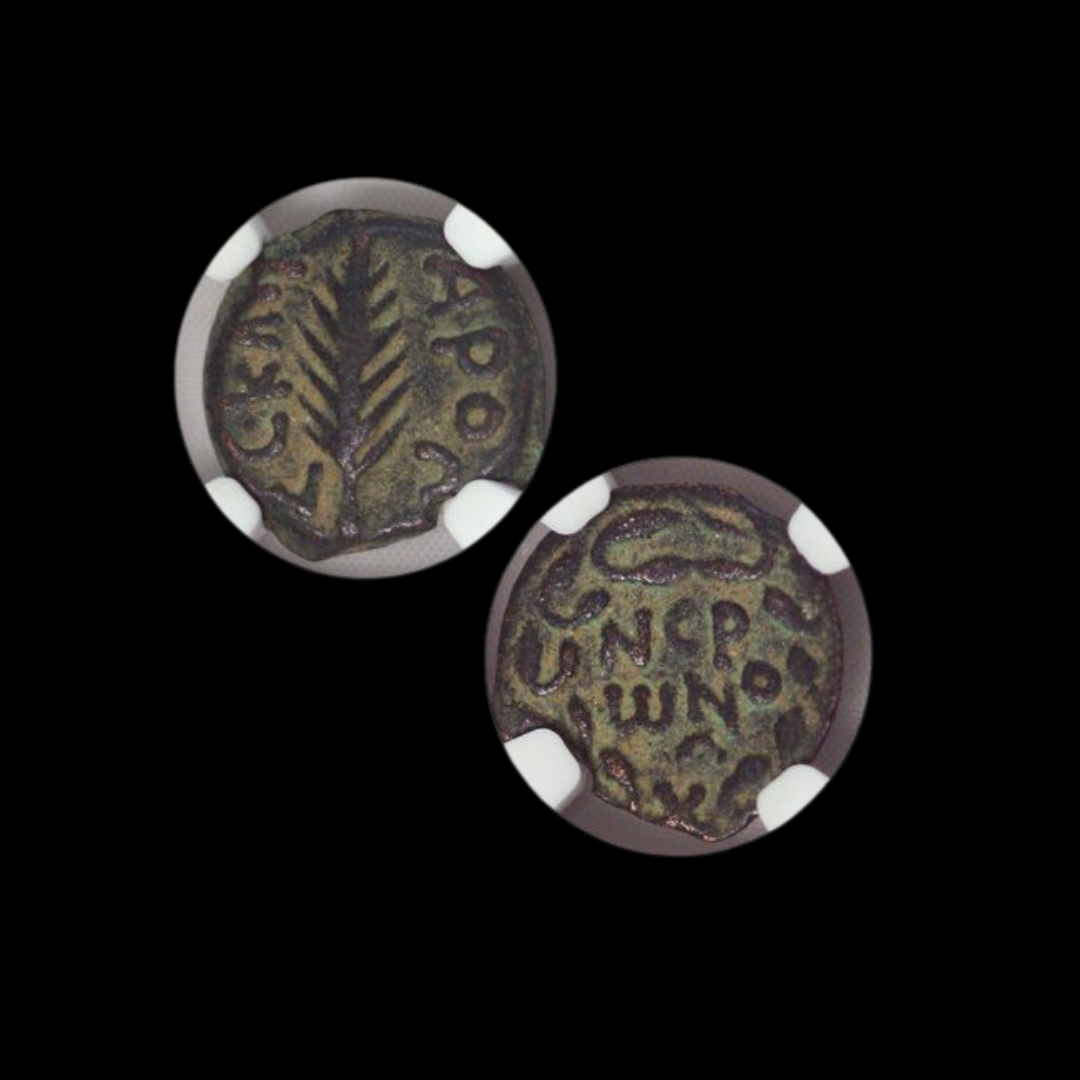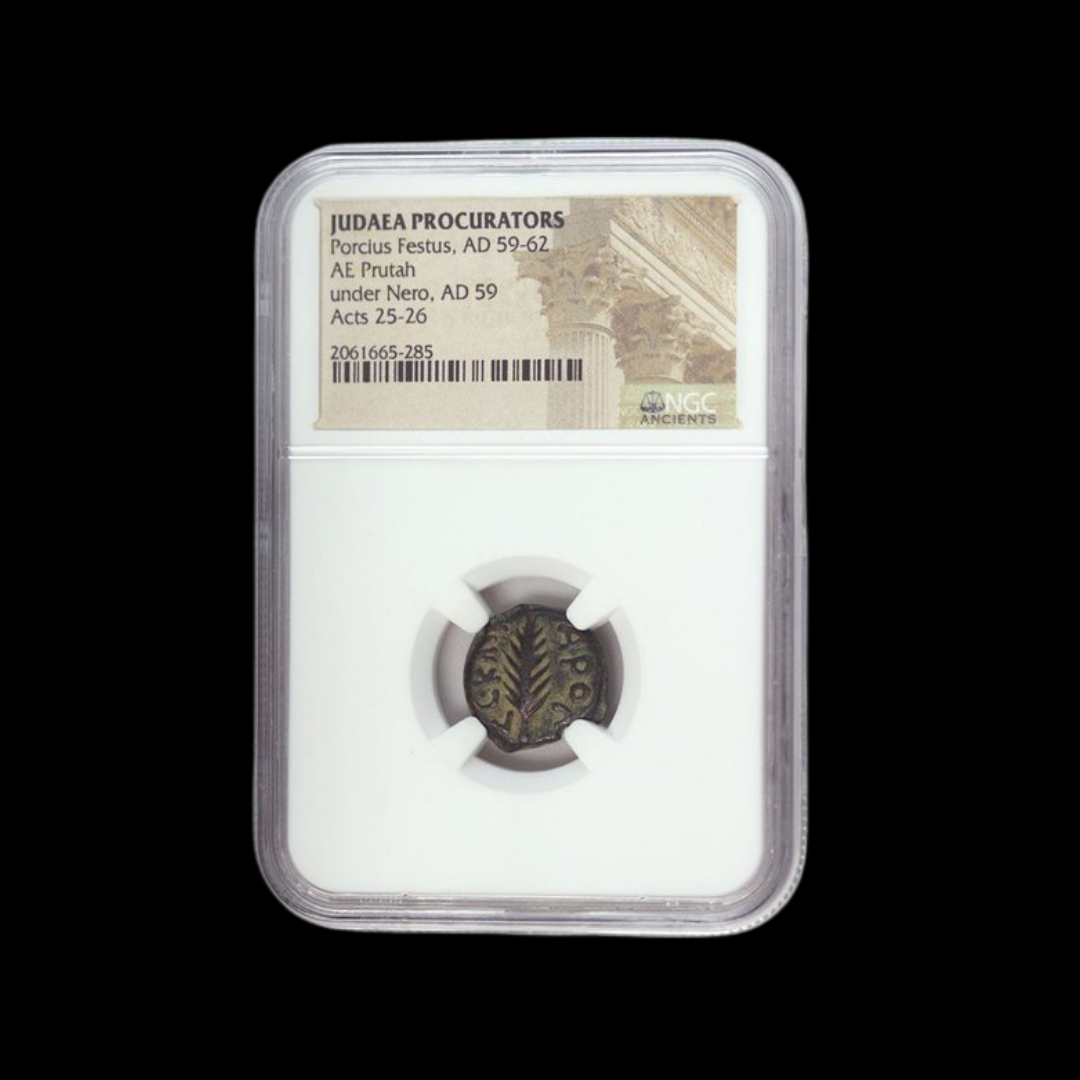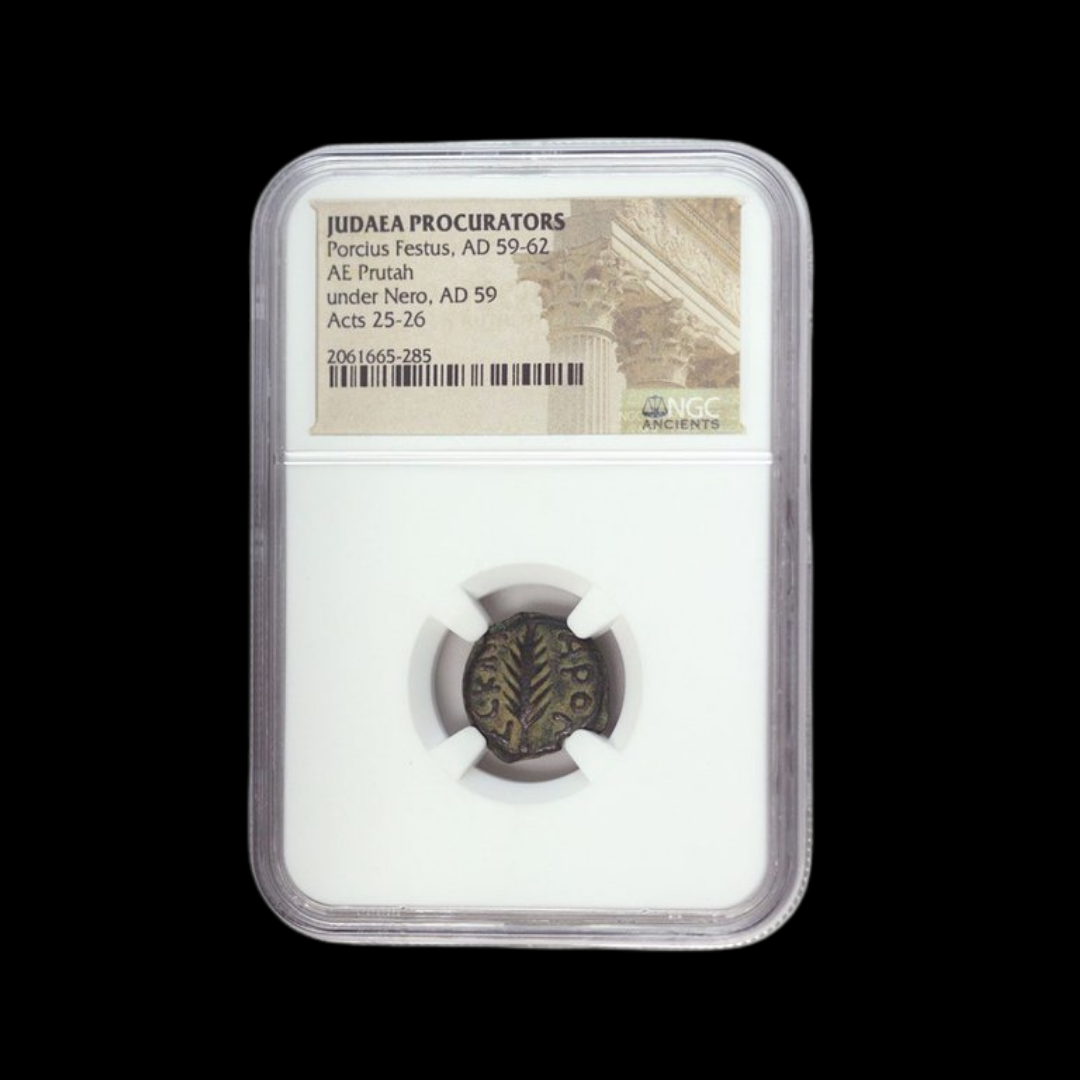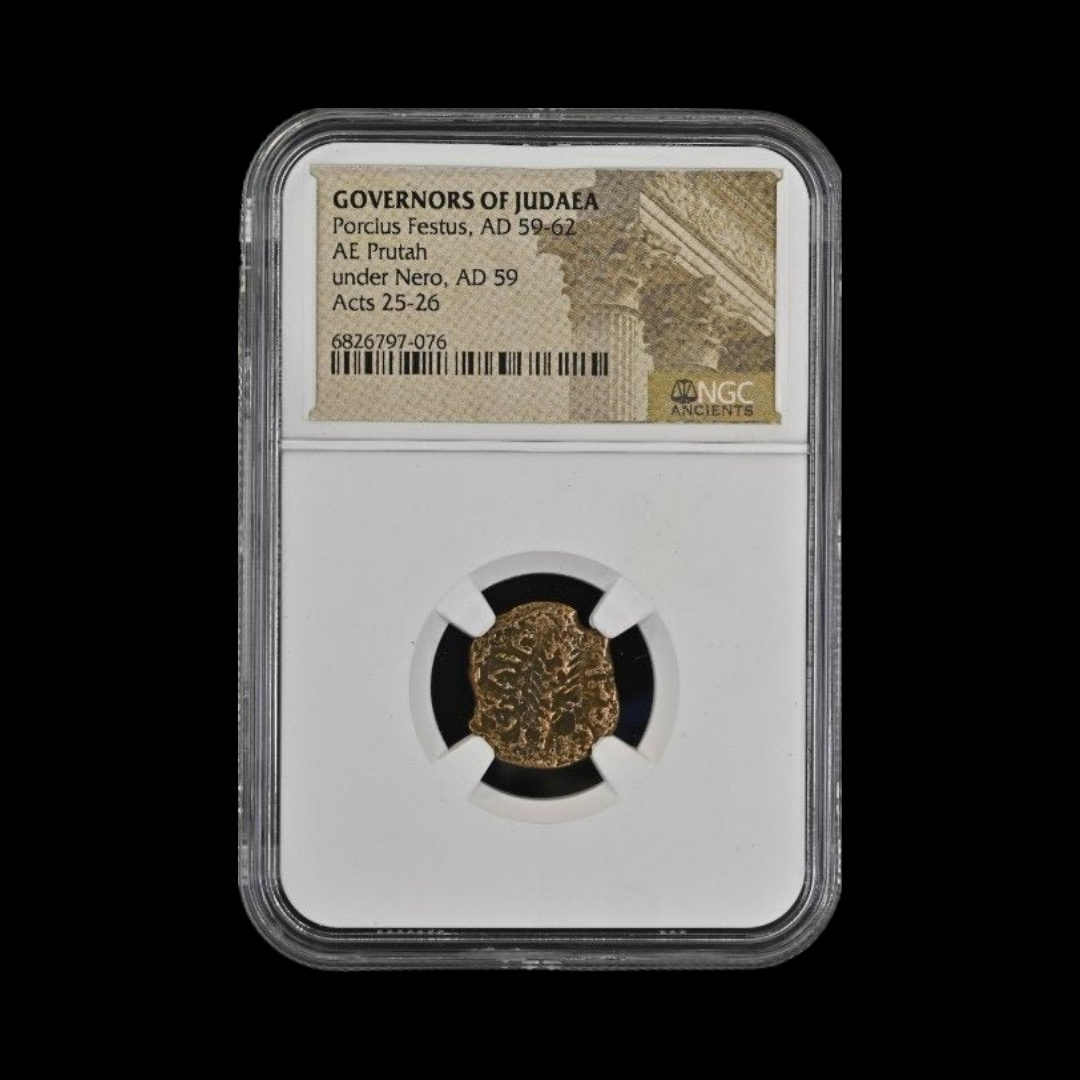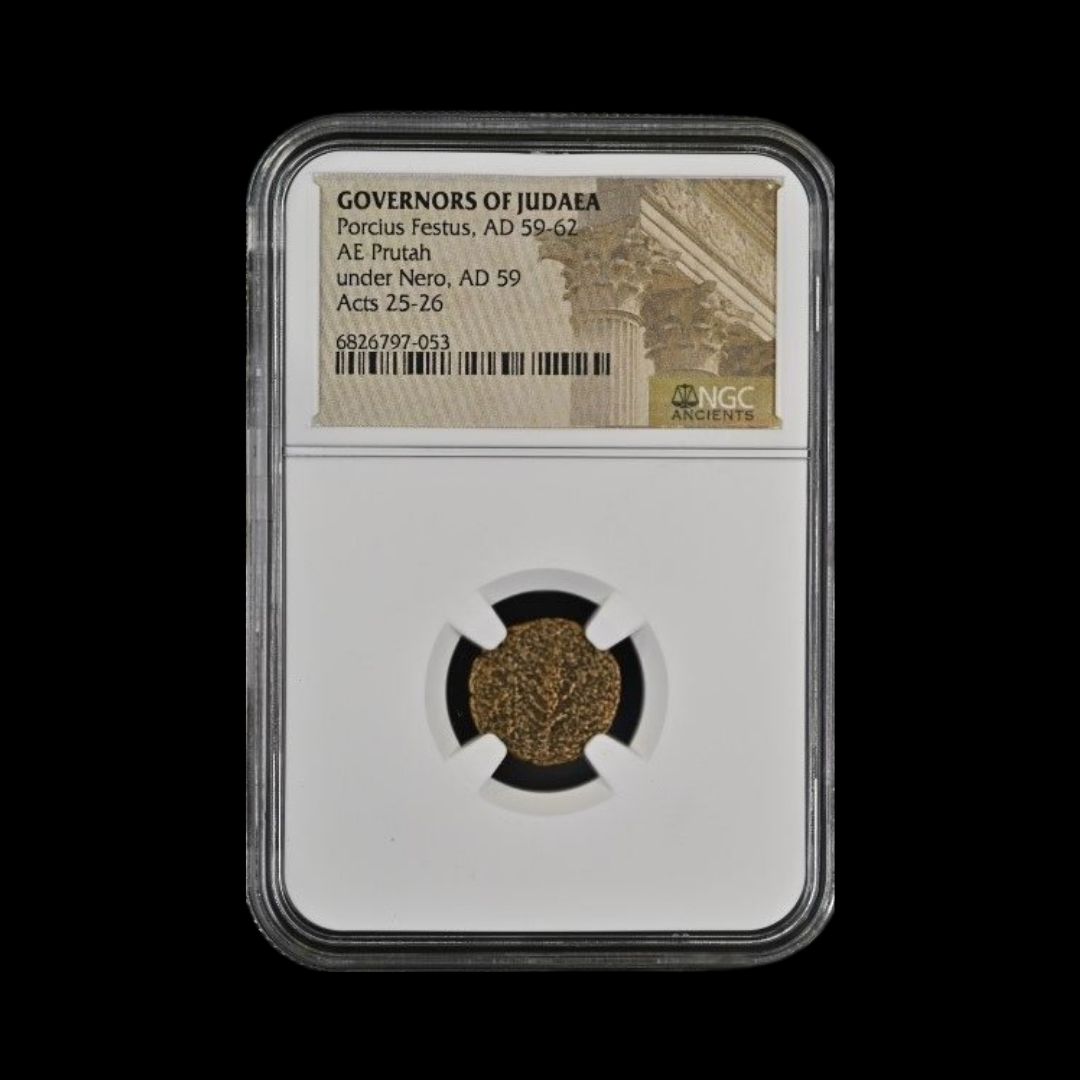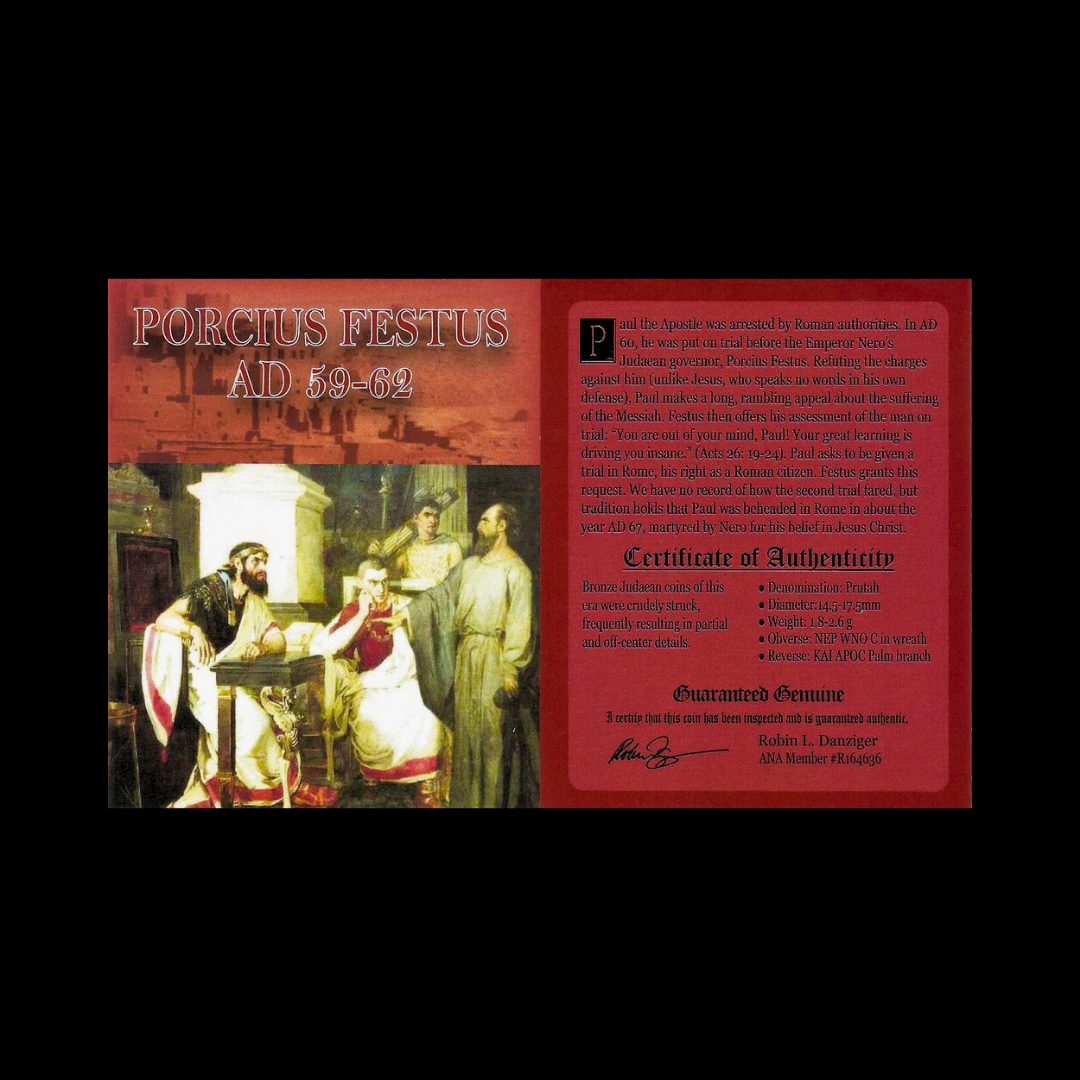 Image 1 of 7
Image 1 of 7

 Image 2 of 7
Image 2 of 7

 Image 3 of 7
Image 3 of 7

 Image 4 of 7
Image 4 of 7

 Image 5 of 7
Image 5 of 7

 Image 6 of 7
Image 6 of 7

 Image 7 of 7
Image 7 of 7








Judaea AE Maccabean (Biblical Widow's Mite) Prutah (about 2,155-2,060 years ago) (CV)
The coins shown are representative examples of the grade and type, but not the actual specimens for sale. For details on NGC’s grading standards and definitions, please refer to our NGC Grading page.
This small bronze coin is commonly referred to as the "Widow's Mite" based on the New Testament story where Jesus praises a poor widow who donated two small coins (lepta or prutot), representing all she had. These humble coins were the lowest denomination in circulation in Judaea during the Hasmonean period, primarily used by common people for everyday transactions.
Coin Description:
Front side: Likely features Jewish symbols such as an anchor, cornucopia, lily, or palm branch, depending on the specific ruler's design
Back side: Hebrew inscription within a wreath or border, typically identifying the ruling Hasmonean leader
Technical Details:
Bronze composition
Prutah denomination (smallest coin in the Judaean monetary system)
NGC certified (Numismatic Guaranty Corporation)
Reference number: MACCABEAN (CV)
Minted between 135-37 BCE during the Hasmonean Dynasty
Condition: Certified by NGC, specific grade not provided
Historical Significance: This coin represents both the political independence of Judaea after the Maccabean Revolt and everyday economic life during the Second Temple Period. Known as the "Widow's Mite" from the Gospel accounts, these humble coins illustrate the economic reality of common people in ancient Judaea. The Hasmonean dynasty that produced these coins established Jewish autonomy after overthrowing Seleucid rule, maintaining independence until Roman conquest under Pompey in 63 BCE.
The coins shown are representative examples of the grade and type, but not the actual specimens for sale. For details on NGC’s grading standards and definitions, please refer to our NGC Grading page.
This small bronze coin is commonly referred to as the "Widow's Mite" based on the New Testament story where Jesus praises a poor widow who donated two small coins (lepta or prutot), representing all she had. These humble coins were the lowest denomination in circulation in Judaea during the Hasmonean period, primarily used by common people for everyday transactions.
Coin Description:
Front side: Likely features Jewish symbols such as an anchor, cornucopia, lily, or palm branch, depending on the specific ruler's design
Back side: Hebrew inscription within a wreath or border, typically identifying the ruling Hasmonean leader
Technical Details:
Bronze composition
Prutah denomination (smallest coin in the Judaean monetary system)
NGC certified (Numismatic Guaranty Corporation)
Reference number: MACCABEAN (CV)
Minted between 135-37 BCE during the Hasmonean Dynasty
Condition: Certified by NGC, specific grade not provided
Historical Significance: This coin represents both the political independence of Judaea after the Maccabean Revolt and everyday economic life during the Second Temple Period. Known as the "Widow's Mite" from the Gospel accounts, these humble coins illustrate the economic reality of common people in ancient Judaea. The Hasmonean dynasty that produced these coins established Jewish autonomy after overthrowing Seleucid rule, maintaining independence until Roman conquest under Pompey in 63 BCE.








